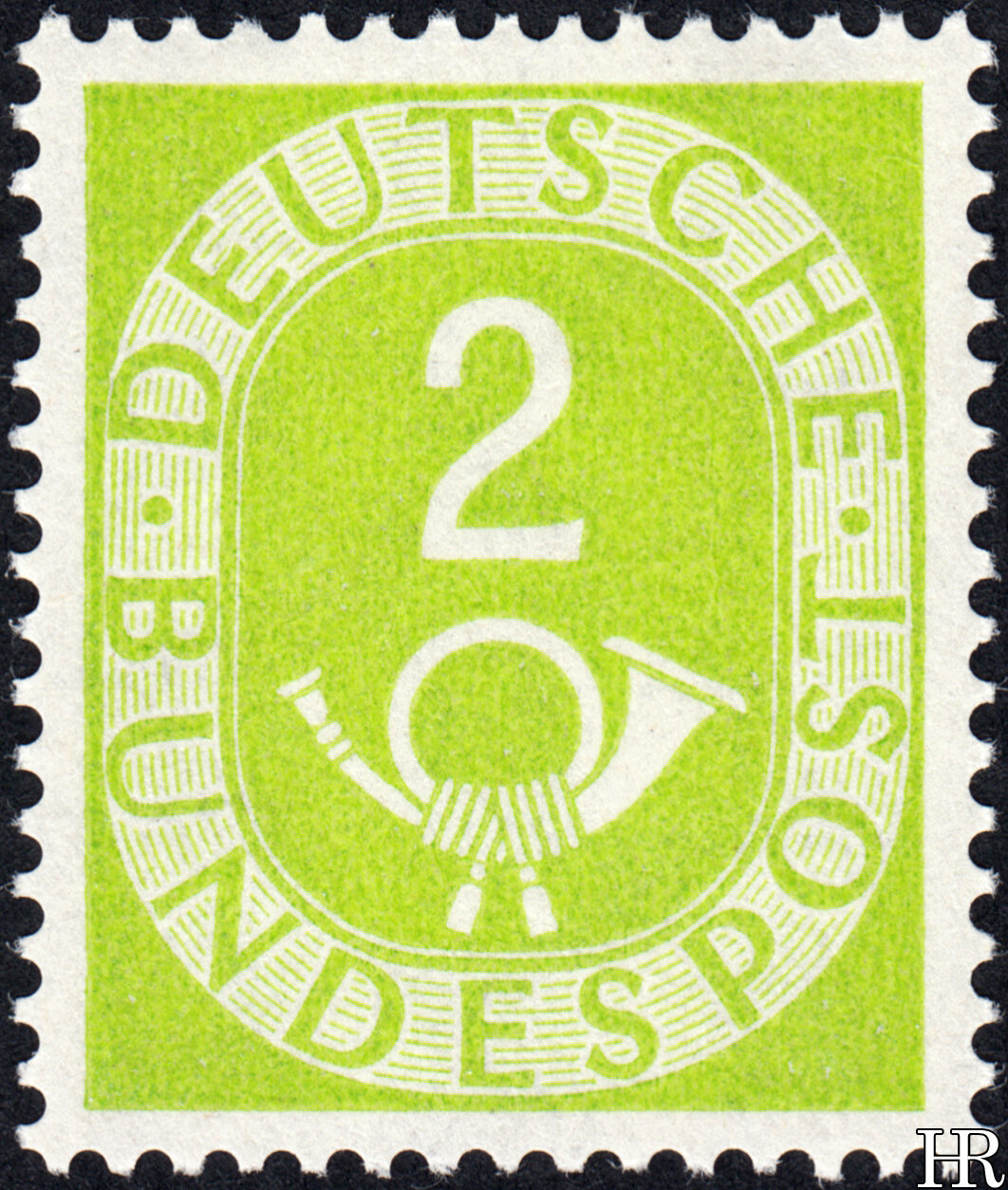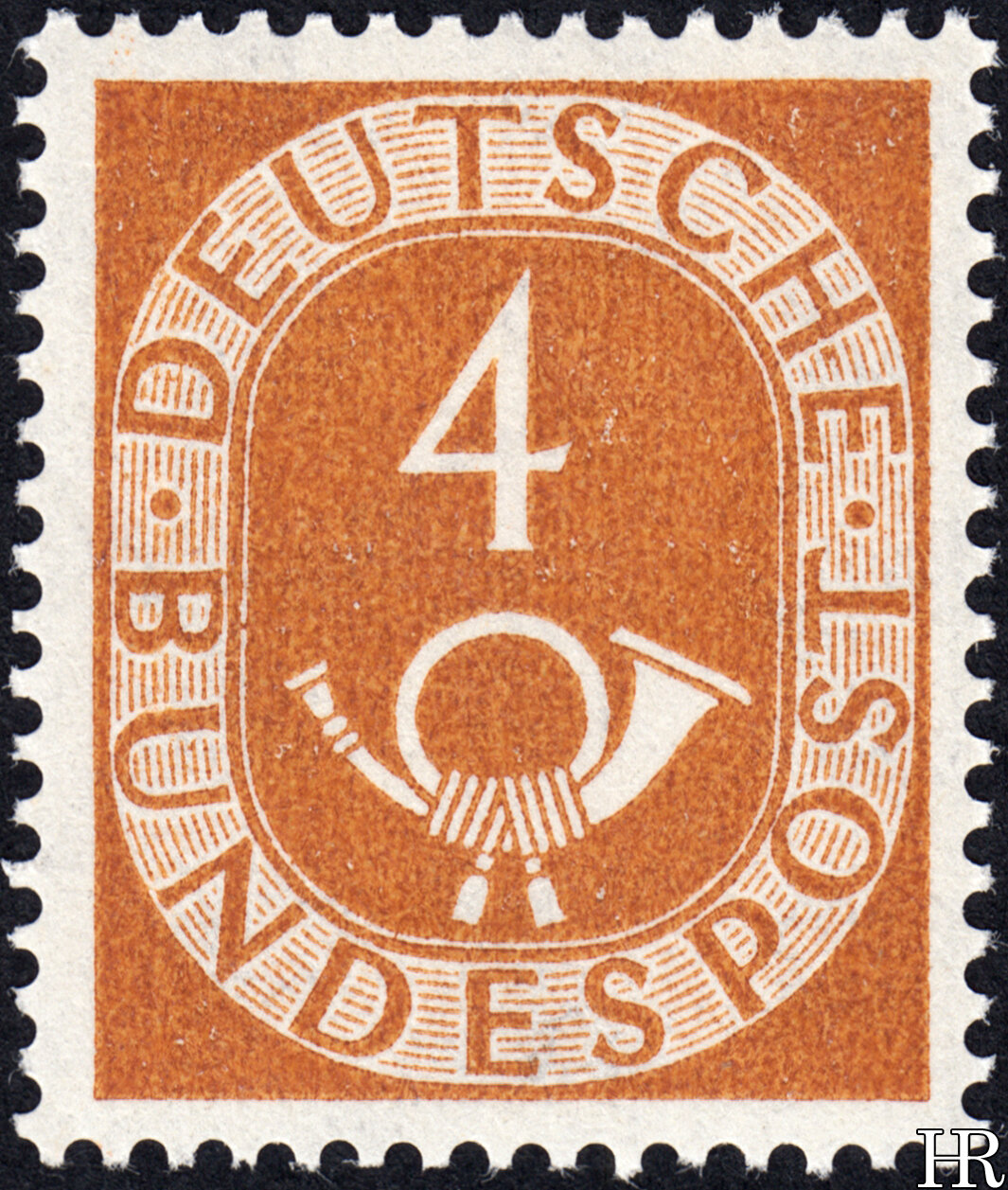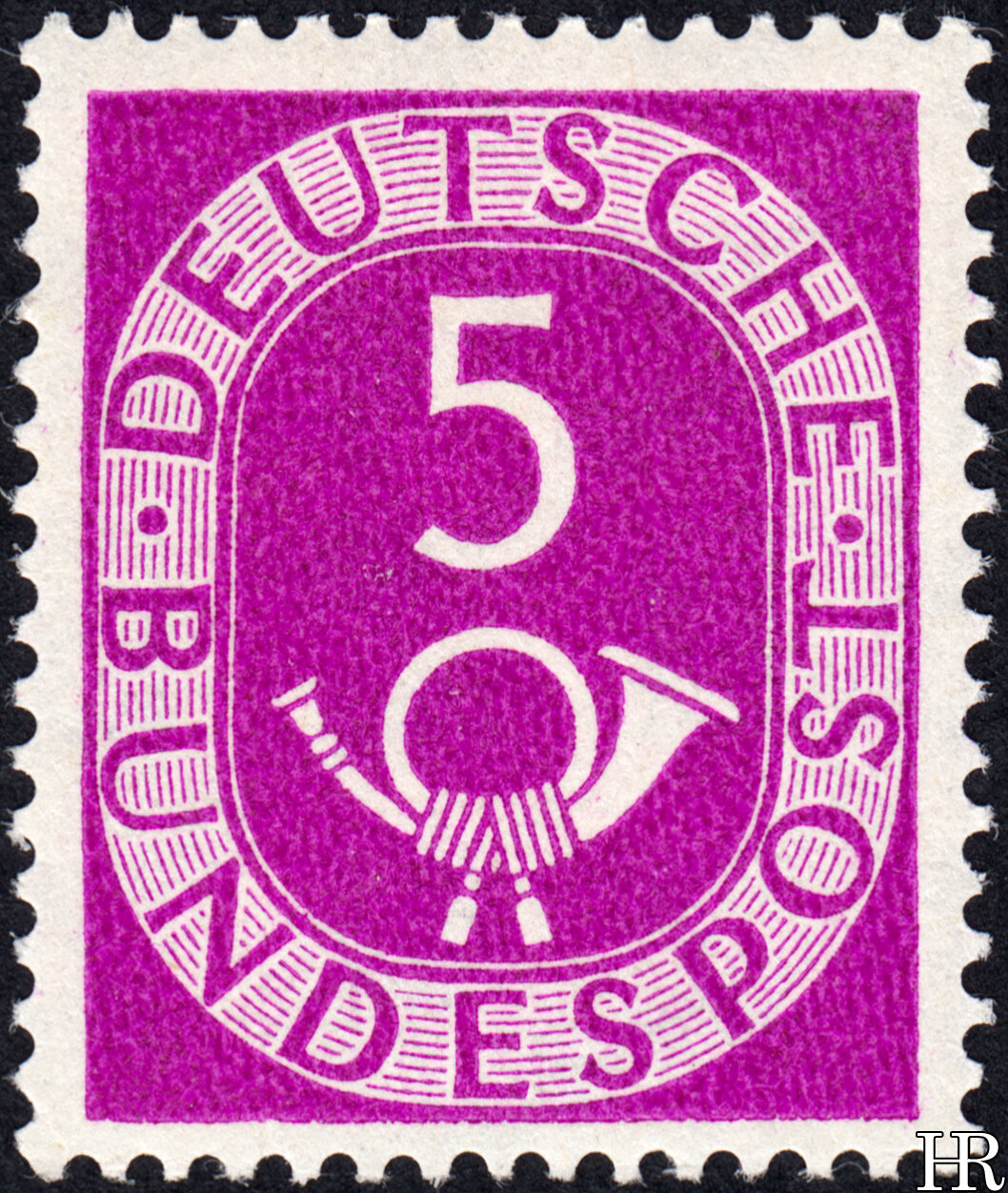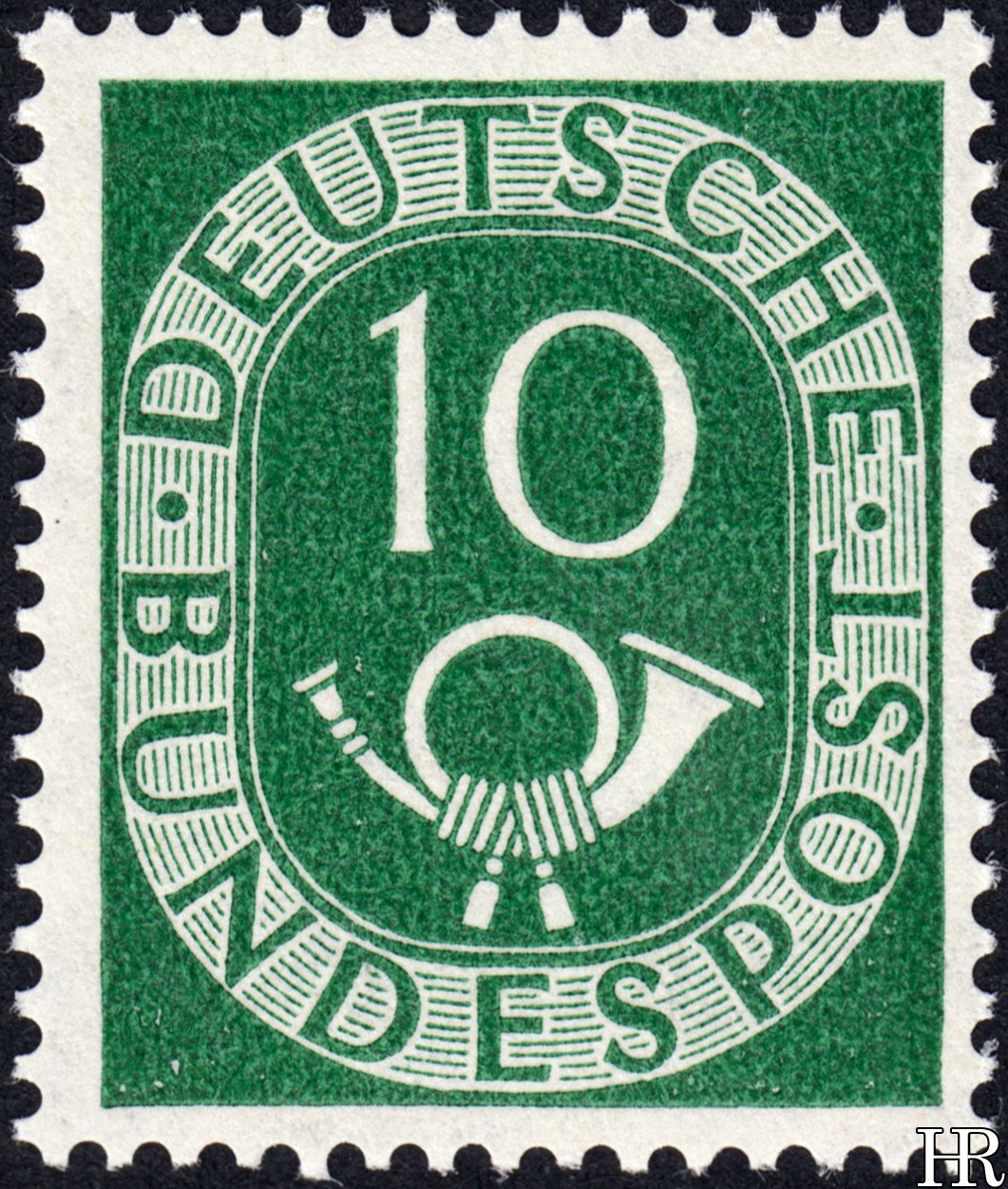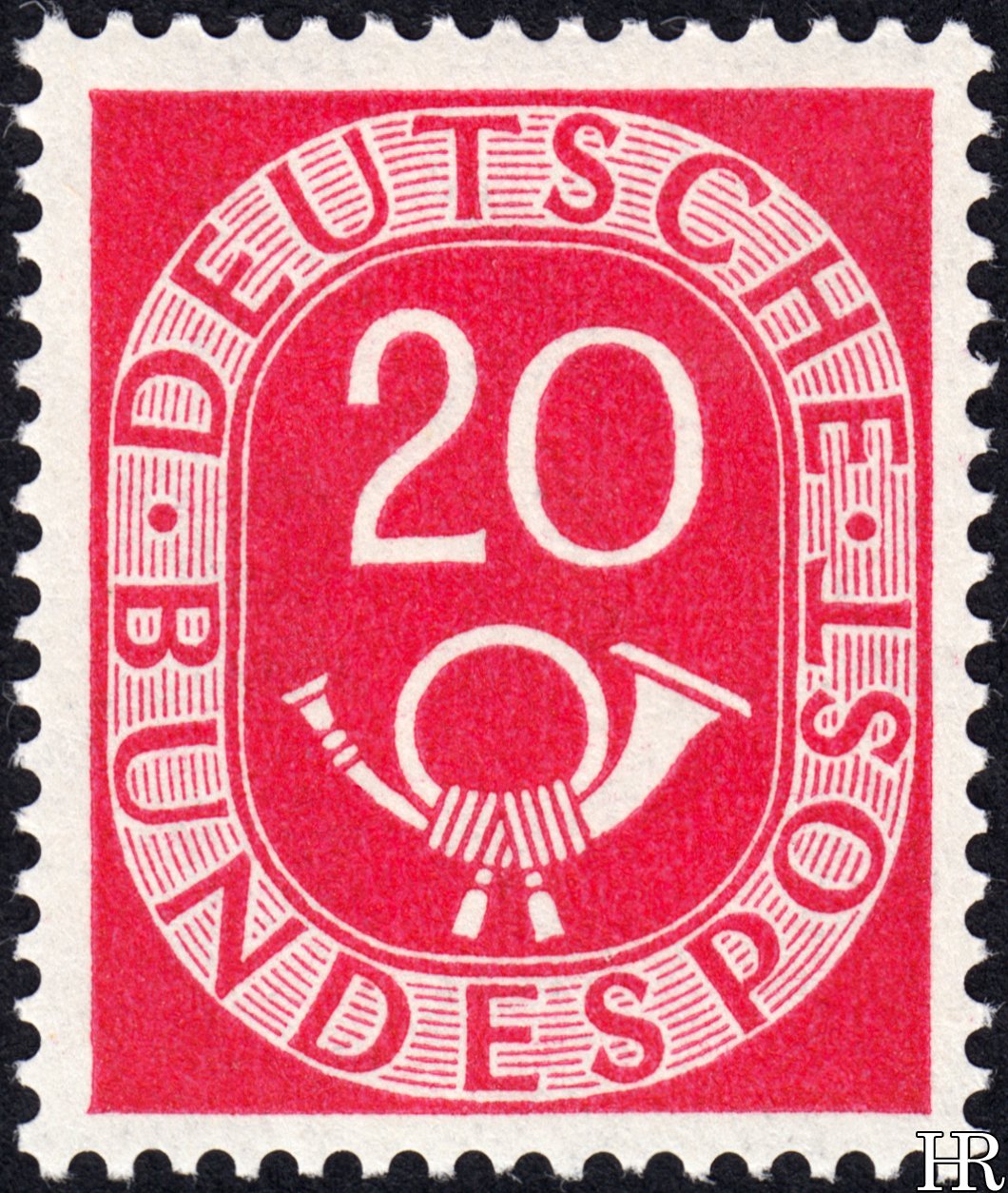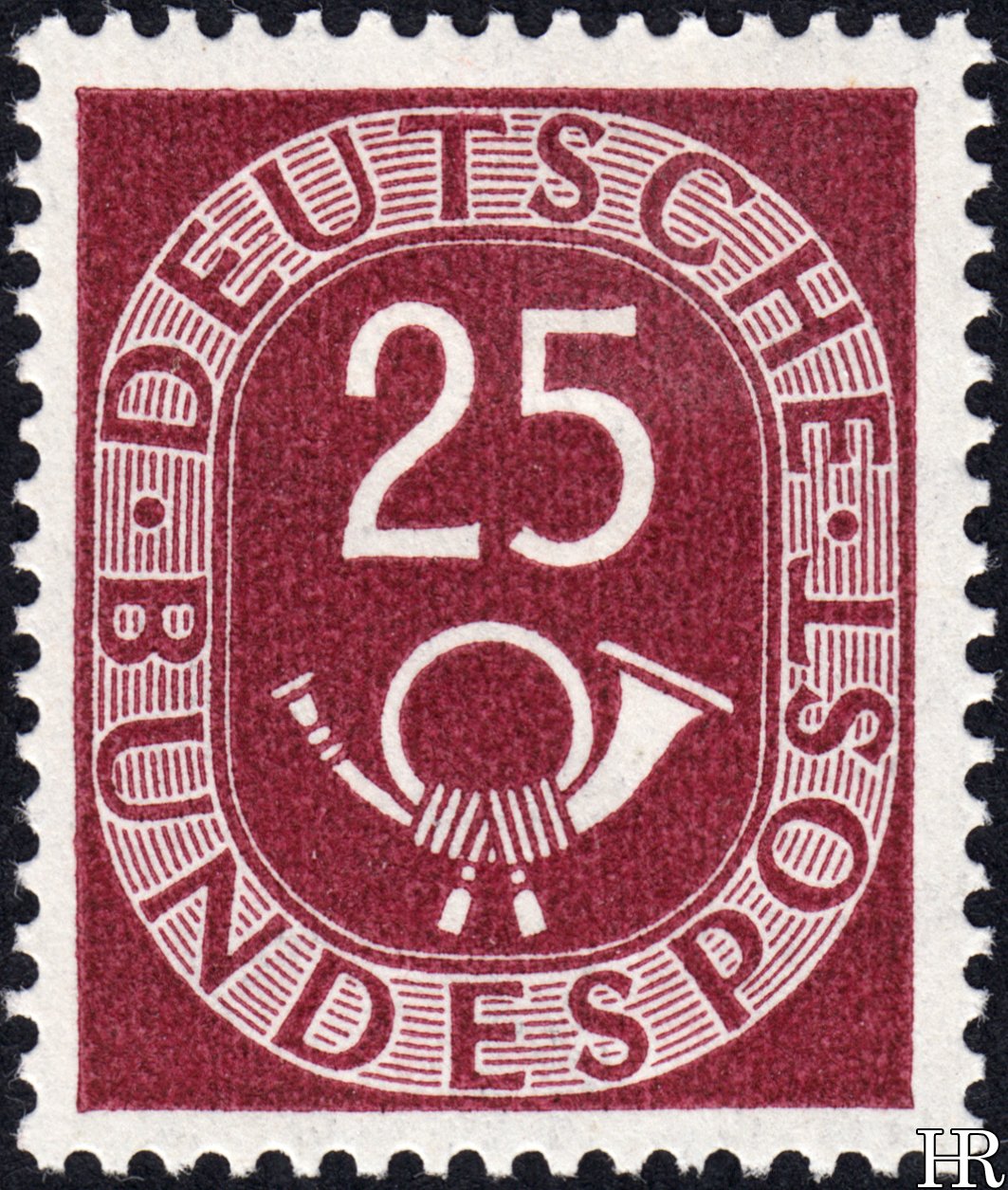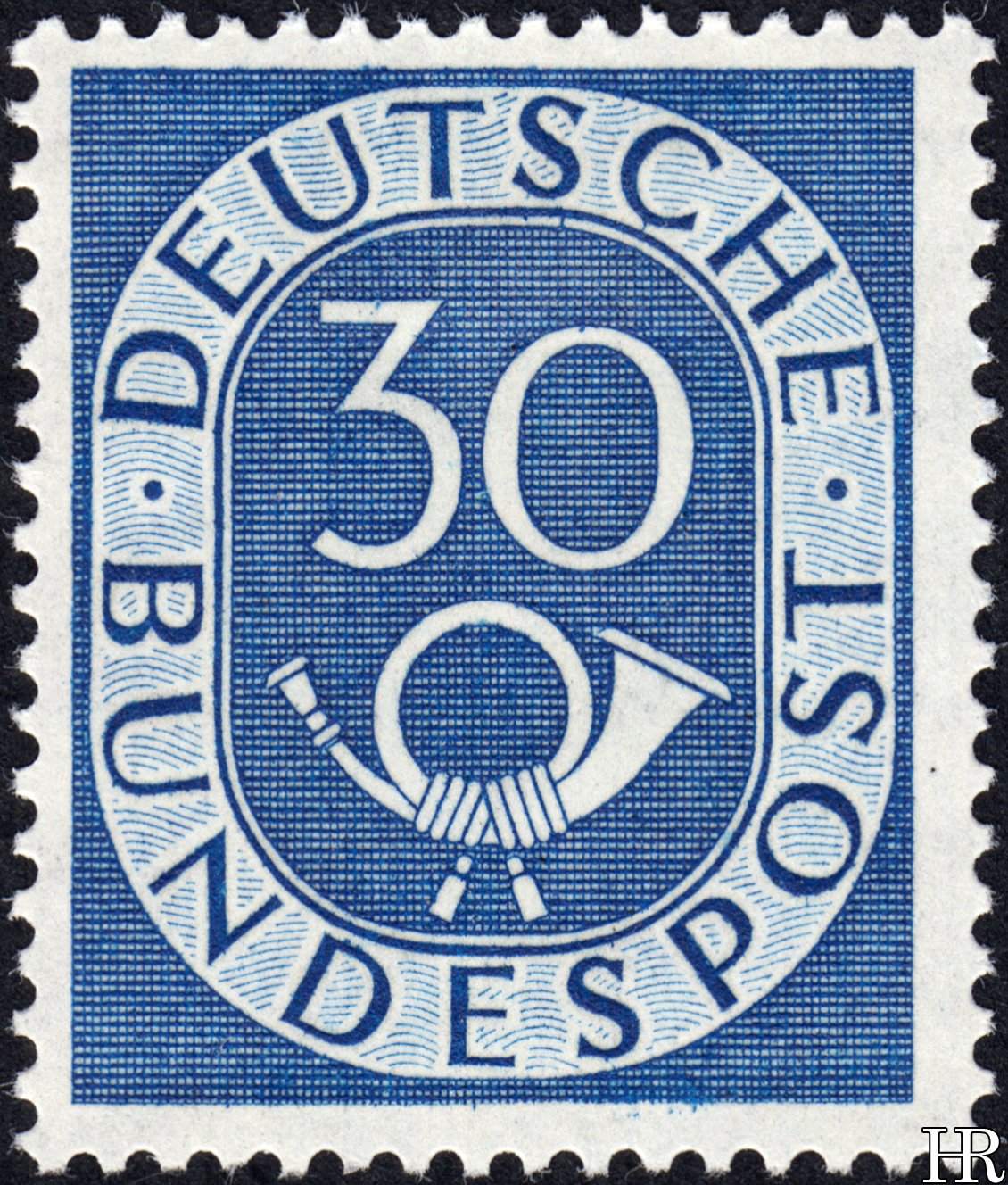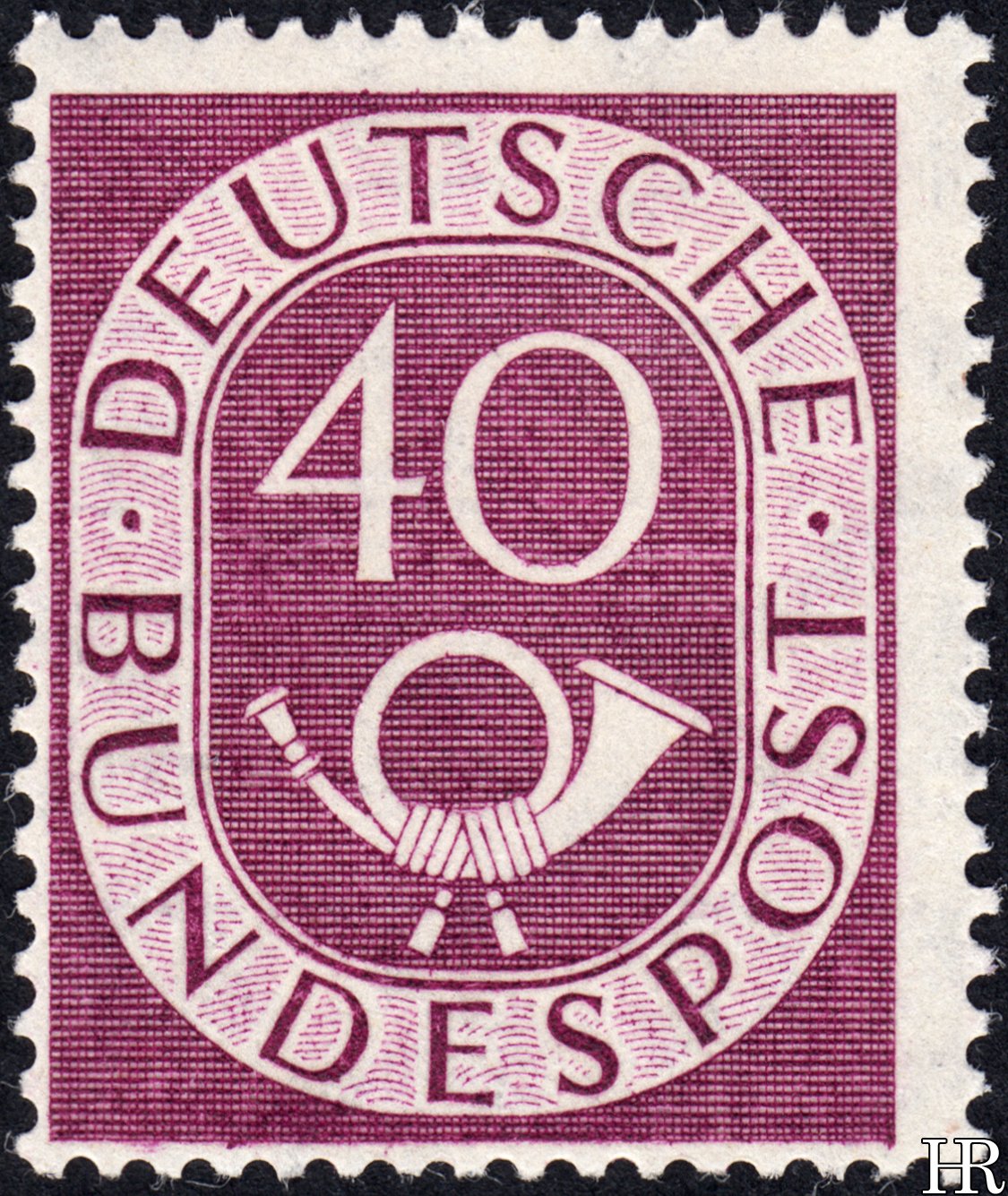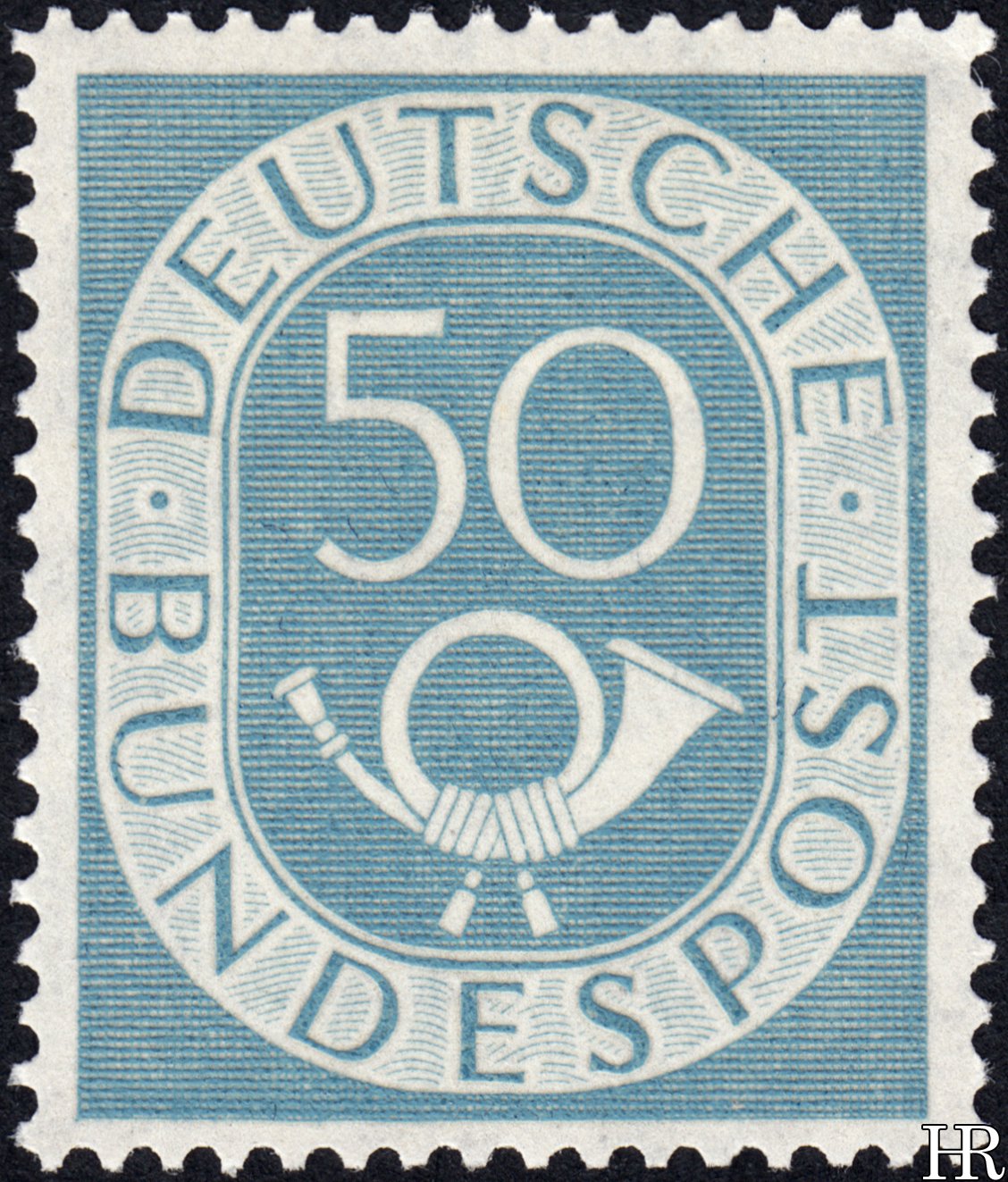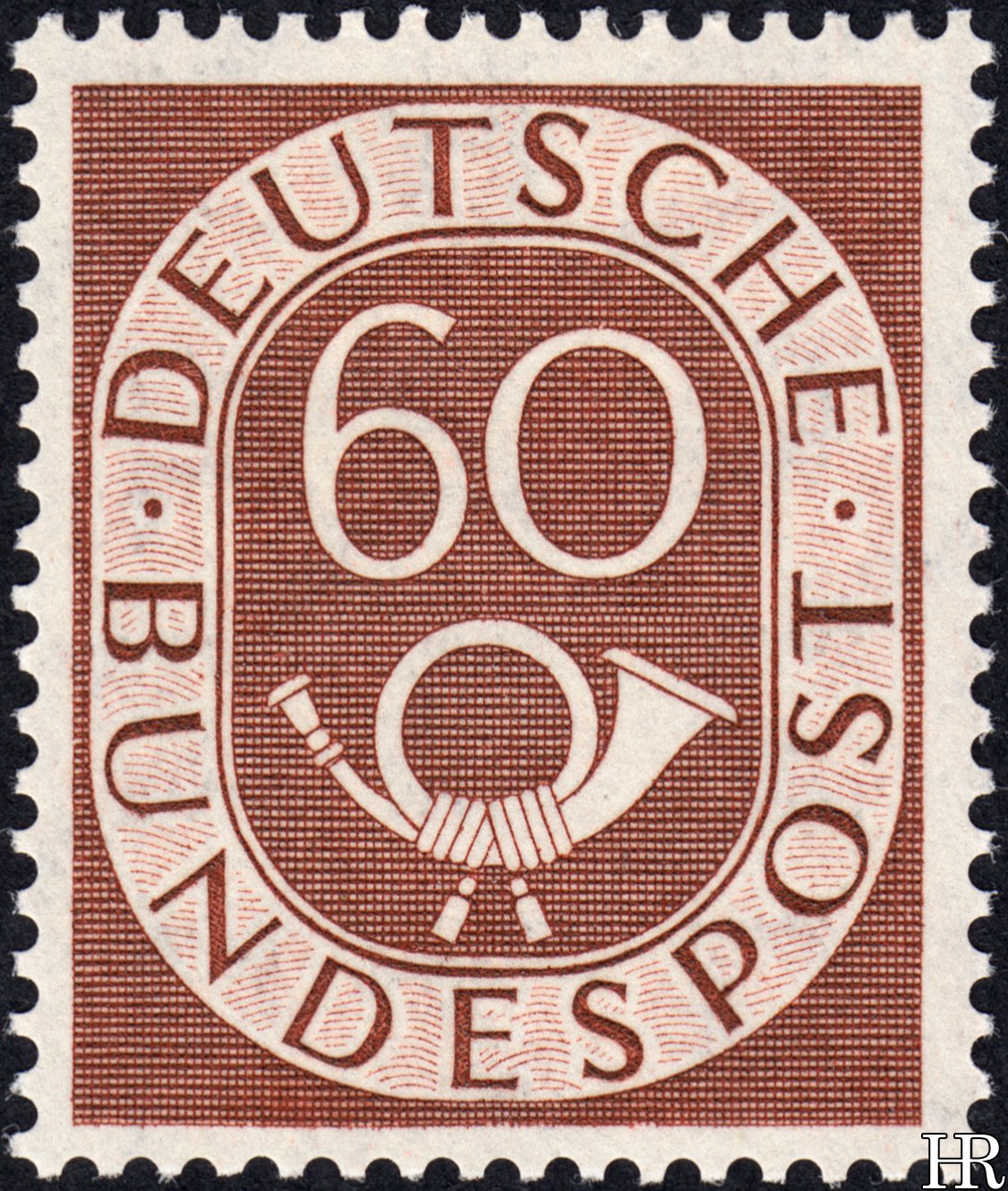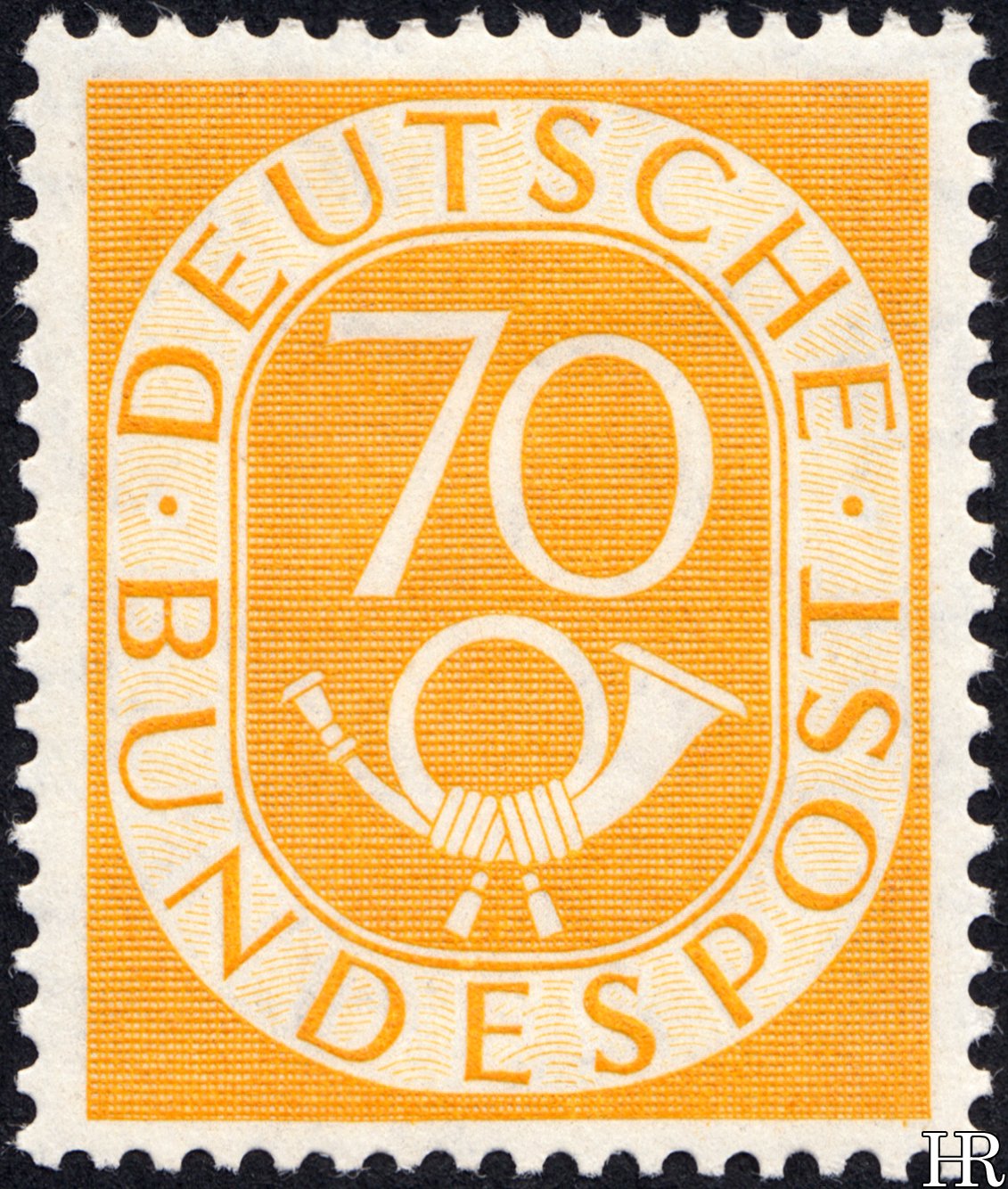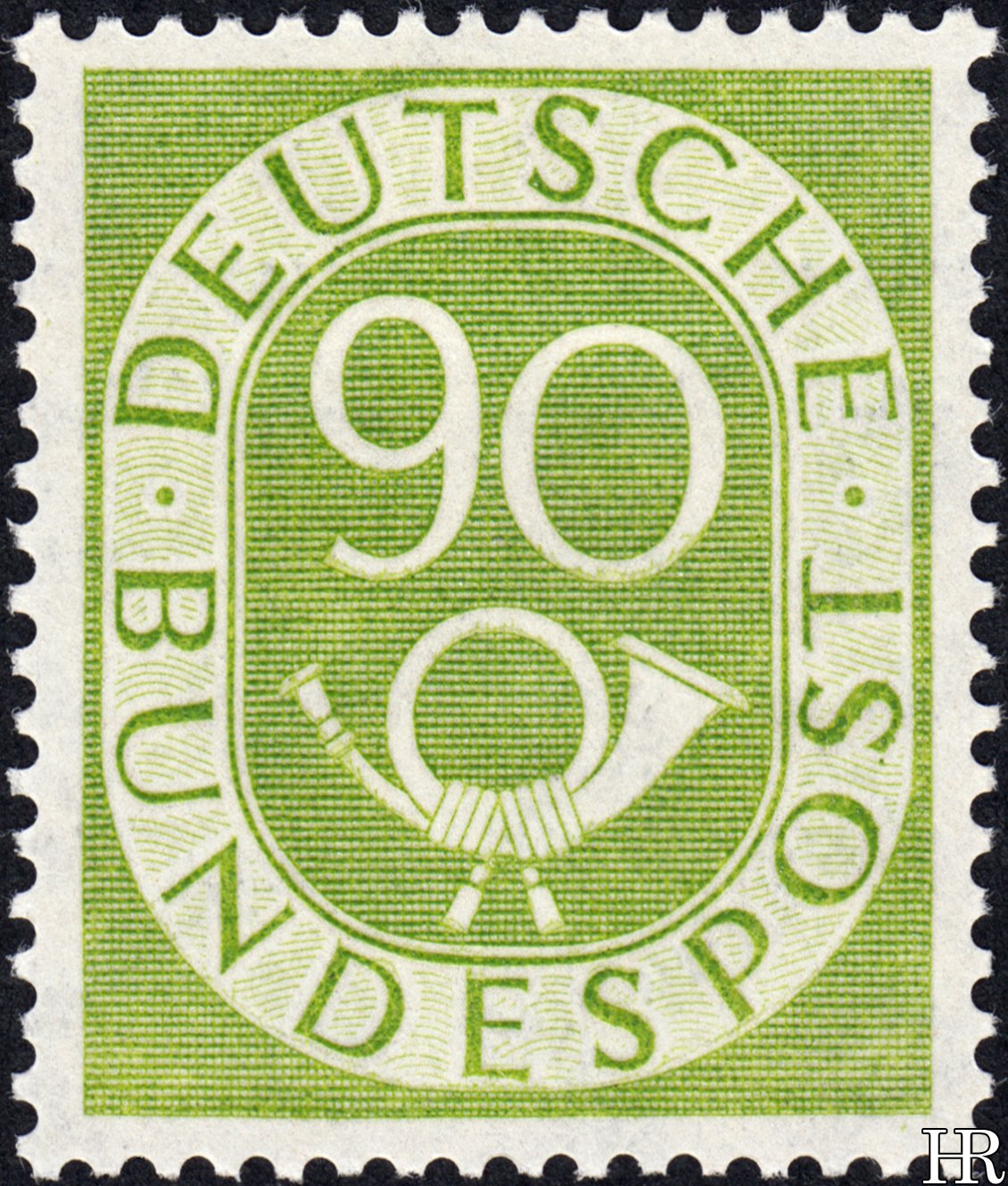West GERMANY
Posthorn Issue, 1951-1952
First Issued: 20 June 1951
Currency: Deutsche Mark (100 pfennige = 1 mark)
Production: Federal Printing Works, Berlin
The first definitive issue of West Germany. It’s perhaps just slightly dull, but that perhaps is the point. There’s a sobriety and seriousness of purpose to these stamps — they speak of a country emerging from the devastation of the 1940s and ready to resume its place at the table of responsible nations. The heraldic eagle of the Weimar Republic had been rehabilitated in 1950, but these stamps eschew it in favour of the traditional posthorn. The overall impression is rather Scandinavian — one thinks of the famous posthorn stamps of Norway, but the restrained, unostentatious deign is also in keeping with the Nordic approach. Happily, we see a broader colour palette than that favoured by the Scandinavians: beyond the obligatory range of browns and dull reds we have some vivid greens and blues.
A less happy source of inspiration is Nazi Germany. These follow the format introduced by the “Hitler Heads” of 1941 (see right): the lower pfennig values are typeset and the higher ones are slightly larger and recess-printed. There are no mark values here, but the next definitive series (that of 1954, depicting president Heuss) included mark values, which like those of 1941 were recess-printed and of a larger size again. This format was gradually modified until the definitive issue of 1964, which was all one size and entirely recess-printed.
The designer was Georg Alexander Mathéy, who in a previous life had designed the quaint National Versammlung commemoratives of 1919. Printing was carried out by the Bundesdruckerei in Berlin. On the production side these are as good as they could have been — some of the typeset stamps have imperfections and white patches, and there’s areas of light inking on parts of the recess-printed ones. But these are minor issues.
The issue went on sale over the course of almost a year, and was current for a relatively short time. Sales were ordered to cease at the end of June 1954, and the stamps became invalid after being 31 December 1954. These are, as I understand it, the priciest stamps of West Germany, at least in no-hinge-original-gum condition. The ones pictured here are hinged, naturally.
14 August 2020

